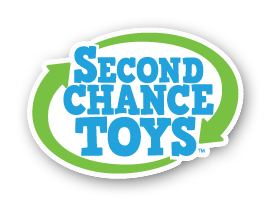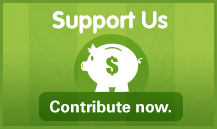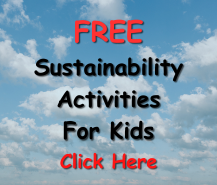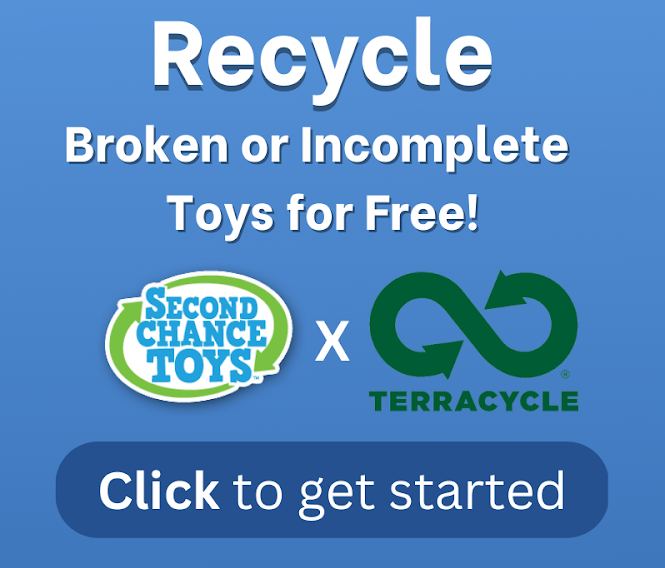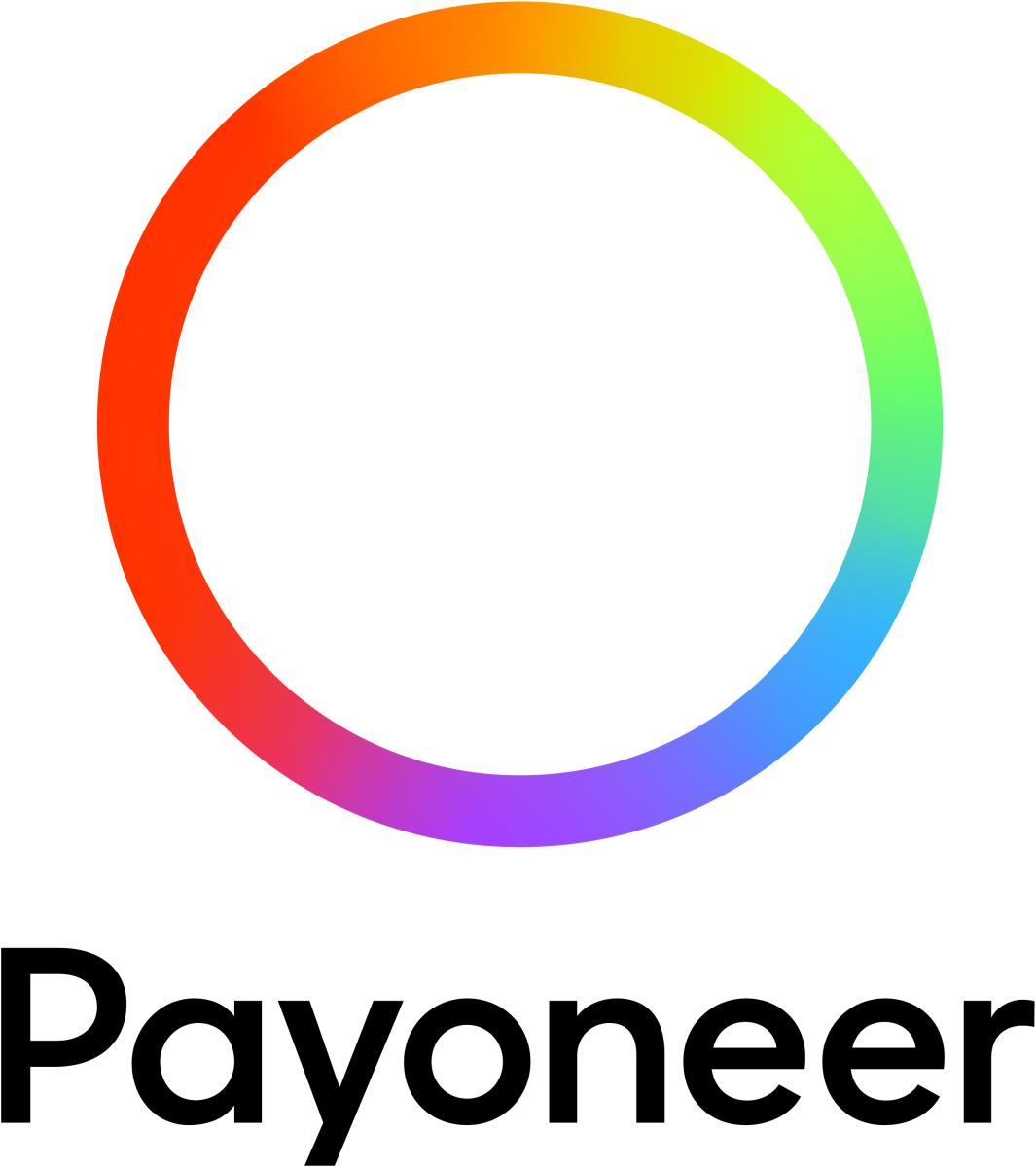Blog
Part one in a new series from Second Chance Toys on the impact that donated toys have on the children who recieve them
Welcome to a new series of articles and shared stories that follow what happens to your toys after you drop them off. In each story, we'll share how a toy donation has directly and positively impacted the life of a child. We share these just as our holiday toy donations begin, with the hope that these stories provide some inspiration for giving and also a greater appreciation for the importance of toys.
Anthony and his family had a holiday season they will never forget. It had been a year of great lows. First the family was forced to relocate to a more affordable apartment. Then after a serious health threat landed Anthony’s father in the hospital, things became desperate. The family – which includes Anthony, his parents and his eight siblings -- were forced to move into a transitional living center located in Newark, NJ. The New Community Harmony House, a shelter that provides families like Anthony’s with the support they need, became their new home.
The New Harmony House offered new hope for the family – and also great support in the areas of job and education assistance, and food and clothing. But for Anthony, one of the most cherished gifts this transitional housing facility gave him was hope for the future – through the eyes of a plastic dinosaur.
It happened one afternoon when Second Chance Toys paid Anthony and the other kids at Harmony a visit several days before Christmas. Anthony and his brothers and sisters expected nothing for the holidays. They knew their parents’ situation. But that afternoon, they were pleasantly surprised to receive good-as-new plastic toys, with small tags bearing a note from the previous owner wishing them well. Anthony was given a dinosaur, a yellow helicopter, and two big trucks, but it’s the toy dinosaur that impacted him most. It made him curious about the study of dinosaurs, which blossomed into a general interest in the sciences, which made Anthony decide that he himself wanted to be a scientist when he grew up. And once he became famous for his discoveries, he was going to buy his family a new house they could all live in together. His mother believes the toy not only had a special meaning for her son but it helped him in his social and educational development. For Anthony that dinosaur has given him inspiration and hope.
Recycled love and a second chance. It’s magic.
Hooray for Halloween! The holiday of sweet treats, spooky tricks, and costumes sparked by the imagination—no wonder it’s a favorite for all ages to enjoy! As you and your children prepare for the festivities, use this holiday for more than just collecting candy. Halloween is a great opportunity to discuss the importance of recycling, and then put it into action with these fun craft projects that transform old objects and materials (like, all those candy wrappers) into new creative treasures. Ahead, we share four recycling-based art projects that celebrate the Halloween spirit, promote skill building, and celebrate upcycling.
1.) Black & Orange Recycled-Materials Collage
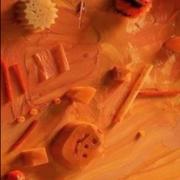
This project is an effective, simple way to introduce your child to recycling. Start by encouraging your little one to save odds and ends that are typically discarded, including bottle caps, paper towel rolls, juice boxes, candy wrappers, and so much more. These open-ended materials are ideal for imaginative play, as they can be transformed and defined by the child’s imagination.
Once your child has a plentiful collection of recycled materials, invite him or her to make a collage by gluing them to a piece of cardboard or canvas. As they create from the unknown, this form of “process art” helps children develop a range of important skills, such as innovation, planning, problem solving, and fine motor development.
When their sculptural collage is complete, let it dry for at least 24 hours. Once the glue has set, your child can paint over the top of their 3-d collage using orange and black paint to create a festive, monochrome collage with a Halloween twist.
Materials needed: recycled materials, canvas or cardboard, paint, paintbrushes
2.) Toilet Paper Roll Characters and Literacy Adventures

Never throw out your toilet paper rolls again! Believe it or not, toilet paper rolls are the perfect recycled material for countless craft projects, and this one promotes storytelling and literacy skills! This Halloween, turn your old cardboard rolls into fun characters or animals, then start narrating new adventures with your little one.
Get started by reading a Halloween-themed book with your children. Ask them about the character details that they notice. Create a list of those features together. When the story is complete, encourage kiddo to decorate their cardboard tubes to bring their own characters to life. Whether you reenact the story you just read or create a new plot from scratch, your child’s cardboard characters pave the way for practicing their reading, writing, and narrative skills.
Materials needed: toilet paper rolls, recycled materials, markers, paint, confetti (optional), googly eyes (optional)
3). Candy Wrapper Origami:

If your home looks anything like mine after Halloween night, your floor is covered in candy wrappers! Instead of tossing them, use all those colorful wrappers to practice origami, the art of paper folding! This engaging, focused activity helps children hone their fine motor ability and practice perseverance. Check out this list of fun shapes and figures that your child can create using nothing more than their hands and upcycled wrappers. Happy folding!
Materials needed: candy wrappers (or found papers) in various patterns and colors.
4.) Cardboard haunted house

Cardboard boxes are one of my favorite open-ended materials for imaginative play. They allow children to create their own space in which they can enact their pretend worlds. Maybe a cardboard box is a space shuttle flying to the moon, a castle with a dragon inside, or a corner café with the best milkshakes in town.
This Halloween, invite your child to make their own haunted house! First, collect a large cardboard box (ideally large enough for your child to climb inside). Then set up a station of open-ended materials to inspire their imagination: markers, paints, stickers, recycled odds and ends (caps, plastic bottles, aluminum foil), pipe-cleaners, buttons—go for it! Assist your youngster (or help guide an older child) to cut out a door and windows using a box cutter. As they work, support their imaginative process by offering open-ended questions. These prompts invite more than “yes” and “no” responses. Try these: “What do you think you might see if you went inside a haunted house,” or “Imagine what it might feel like to live in a haunted house.” Open-ended comments help children create a narrative for their play experience. They also allow them to maintain control over their own creative process, which supports intrinsic motivation and independence.
Materials needed: cardboard box, cardboard scraps (for roof/details), box cutter, variety of open-ended materials for decorating.
Thanks to Rose & Rex Founder, Allison Klein, for writing this article and for her creative ideas. Her online toy boutique and play resource is a partner with Second Chance Toys. They are full of great ideas!!
School is back!! It’s never too soon to start thinking about involving the students in a lesson on doing good and giving back. One way to get students to think about others and give of themselves is to hold a gently-used plastic toy collection just before the holidays. Parents are looking to clean out the old toys that their children have outgrown before they bring in the new ones!! What better way to help children in need during the holidays than to hold a collection of gently used plastic toys at your school. The best part is, no one has to go out and buy anything. And the students get to experience the joy of giving something up of their own and are made aware that that there are those less fortunate.
It is a win-win for the school, students, children in need, and the environment!!
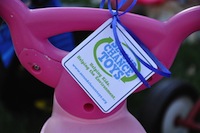
Here are some of our favorite tips provided by the PTA members we've worked with in the past on how to start your collection:
- Get your PTA involved. They have the manpower to help out.
- Get a date on the school calendar approved by the principal.
- Once you have a date approved, sign up on the SCT website as a collector.
- You will be matched with an organization that needs your toys for deserving children.
- Our website has many resource materials found here to help you with #6-10.
- Have the PTA e-blast parents several times with collection info and to start saving toys.
- Place an article in the school newspaper.
- Place fliers with retailers around town.
- Have morning announcements running in school 3 days before the collection.
- Teachers can use our holiday activity booklet as a springboard for class conversations about doing good and the importance of giving.
- Put information on the sign outside your school.
- Ask for toys that are plastic ONLY, no small or missing parts and batteries working.
-
Your collection can be as simple as the first hour or two of school.
- Collect on the front lawn as the children walk in.
- Take toys from cars dropping off children.
- Between 8-10 older students can be selected to help wipe down the toys.
- Students can also help tag the toys with messages and bag the toys.
- Assign parents to deliver the toys to the organization or arrange to have the organization pick them up.
- Let SCT know how many toys you collected and we will post your info with photos.
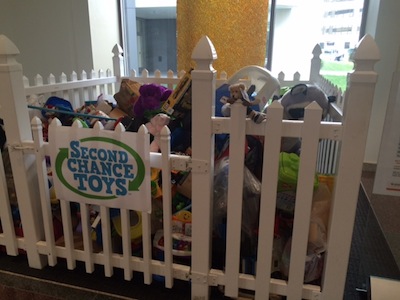
For Booz Allen Hamilton's second Earth Day plastic toy collection, the firm employed some new tactics that resulted in a very successful drive. The combination of a highly visible and attractive picket-fenced toy collection area in their headquarters lobby and getting everyone involved, including the on-site daycare center, pushed their gently used plastic toy total to nearly 1,000 this past April. They also included promotional materials on their elevator and lobby electronic displays which served as daily reminders to employees.
On Earth Day, the Sustainability Team and the firmwide Green Office Teams were joined by over 25 employee volunteers who pitched in to clean and prepare the toys for donation.
“It was so gratifying to work together to benefit those less fortunate and it was great to see all the plastic we were able to keep out of our landfills,” said Elizabeth Wayt, manager of Booz Allen’s Sustainability Program Management Office. Even the daycare center got the children involved in the donation and cleaning processes. “It was heartwarming to see the kids’ excitement as they helped with the toys. The life lessons of helping others in need and recycling can never be started too young,” added Kathleen Medici, Sustainability Specialist at Booz Allen Hamilton.
Booz Allen topped off the firm's successful collection with a generous grant to Second Chance Toys which will go towards outreach to help grow our impact. Thank you Booz Allen Hamilton!!
Twenty hardworking Viacom employees gathered at Fairlawn Recycling Center in New Jersey to clean and pack up an entire 1-800-GOT-JUNK? truck worth of perfectly usable and fun toys for children in need. This year's donation came in at 1,500 toys! The collection was done as a part of Viacommunity Day, a day of service for Viacom employees worldwide.
"It was three hours of fun, cleaning, and bonding for us. The best thing is that kids will get to play with these toys again," commented Patrick O'Sullivan, the Viacom Team Captian for the event. This year, toys collected were delivered to Greater Bergen Head Start, The Vince Lombardi Center for Hope in Newark, and the Apostolic Church in Newark. Excellent work, Viacom!
The 300 toys donated to the children at Vince Lombardi Centers of Hope this Earth Day marked the 10th straight year of toy donations to children in the City of Newark, NJ. In honor of that occasion, Mayor Ras J. Baraka presented us with a Certificate of Appreciation from the city. We'd like to pass that appreciation on to our wonderful collectors and partners who have made the past 10 years of donations possible. Thank you!
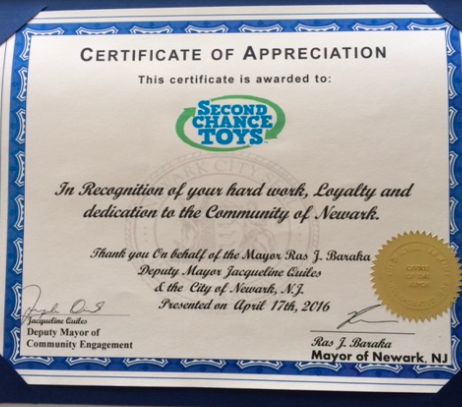
For their Earth Day collection this year, Booz Allen Hamilton found a way to collect over 800 toys for organizations in Northern Virginia and Baltimore/DC. We wanted to share some of their strategies, in case your organization might be able to follow their lead for future collections!
1. Set up a visible collection spot. Booz Allen Hamilton holds a winter new toy collection, and already had the fencing seen here. Employees were already familiar with the fencing and idea of a toy collection, so it was easy to make the transition to collecting used toys instead of brand-new.
2. Open up the collection to everyone. Getting the on-site childcare center involved in both collecting and preparing toys equated to more awareness and fun for everyone.
3. Use Earth Day as a day to gather everyone and work together. Earth Day fell on a Friday this year, so the employees at Booz Allen Hamilton's headquarters, the teachers and children from the on-site childcare center, and employees from nearby locations all participated in cleaning up the toys on that day. Using Earth Day as a culmination of the drive helps drive home the message of the collection-- to reuse and recycle!
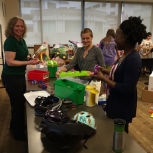
We would like to congratulate Booz Allen Hamilton on a successful Earth Day collection. We'd also like to thank their local moving vendor Office Movers, who donated their time and equipment in delivering toys to three local organizations: Jill's House, Northern Virginia Family Services, and The National Center for Children and Families.
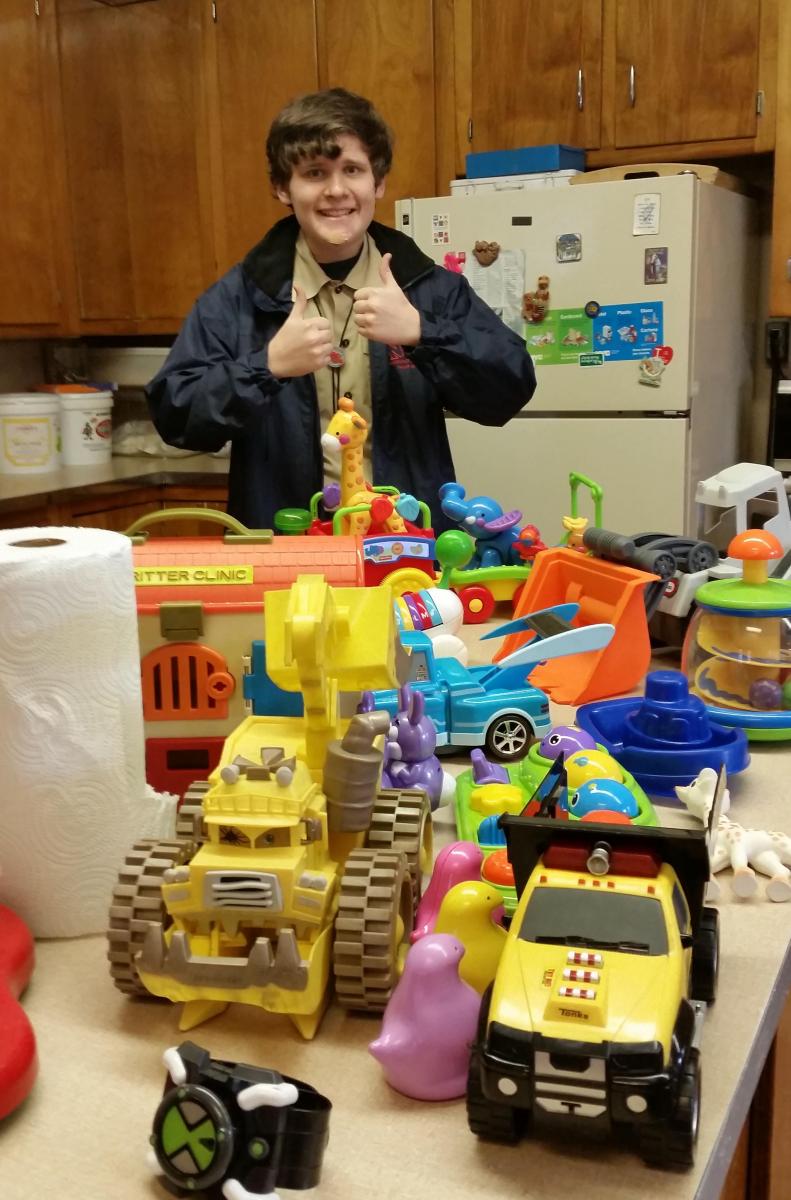



Most of us have had an interesting Spring so far! But it seems like the warmer Spring weather might be here to stay. I don't know about you, but as soon as the weather turns I start to get the itch to clean out the house and get rid of toys and other things we no longer use. That's why Earth Day (April 22) and the weeks around it are such a great time for toy collections. Many people are already clearing things out.
If you come across toys to donate, visit our Drop Off Locations page to see if there's a collection near you. Some collections start as early as this weekend!
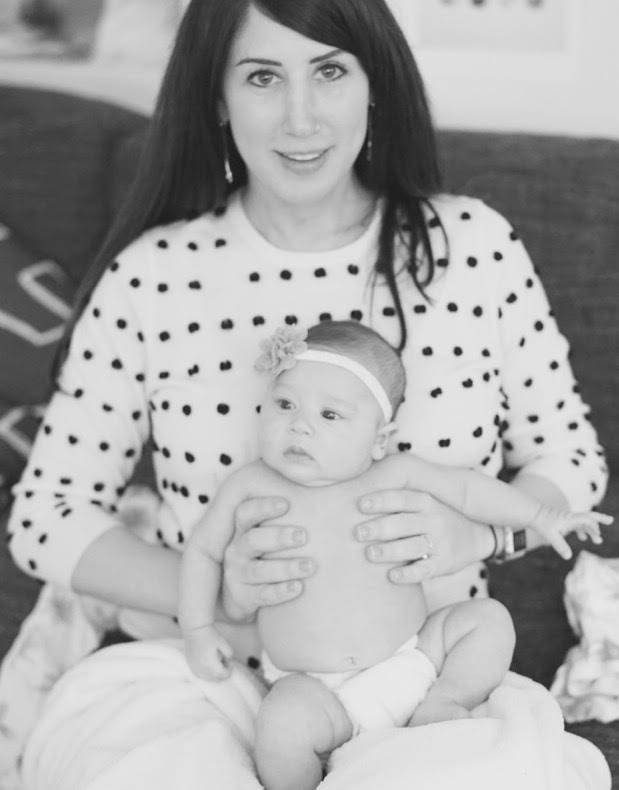
It's Read Across America Day! We thought today would be a great day to share Second Chance Books with you. Though we're unaffiliated, we certainly share a lot more than our similar names. Second Chance Books works much like Second Chance Toys, only with donated used children's books. Consider checking them out and donating books your children no longer need!
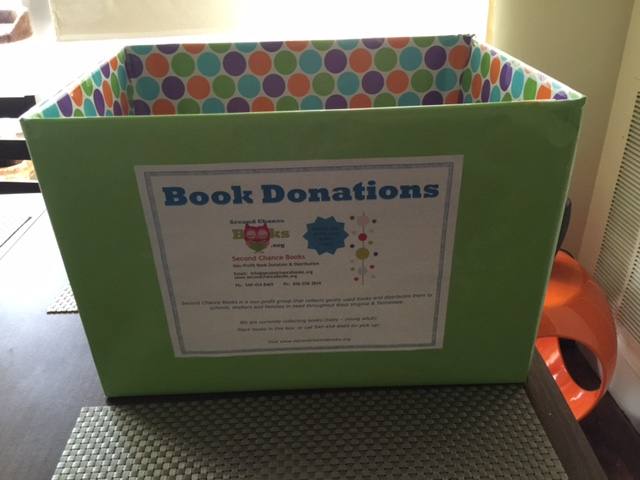
Founded by Nancy Dean, a retired librarian, Second Chance Books is a children's book donation group. In other words, the non-profit collects gently-used books and recycles them to communities in need. Ultimately, Second Chance Books is an on-going collaboration between parents, students and teachers.
"Recycling is important to me for the sheer fact of cutting down on landfill waste," said Karrie Dean, the organization's co-founder and daughter of Nancy Dean. She added: "So many items, like books and toys, can be 'upcycled' to kids in need. It's a win-win." When recycling like that happens, books are kept out of landfills while also getting a "second chance" to reach new readers. As 47% of fourth graders from low-income families read below the basic level -- while 26% of materials entering landfills is paper-based -- book-recycling expands access to books and spreads the joy of reading to more young minds.
Second Chance Books encourages groups to have book drives, and is able to pick up books in Virginia, Maryland, Pennsylvania, New Jersey and New York; books can otherwise be shipped to their headquarters for distribution. For more information on Second Chance Books and how you may get involved, click on over to www.secondchancebooks.org.
We posted earlier about the successful toy drive that Chobani had at its Idaho facility, but they were also massively successful at the company's New York headquarters! The employees in New Berlin and Norwich, NY collected enough toys to completely fill up a truck, inside and out. The toys were delivered to the non-profit Roots & Wings, which provides household goods, food, and clothing to 225 families going through emergencies or hard times.
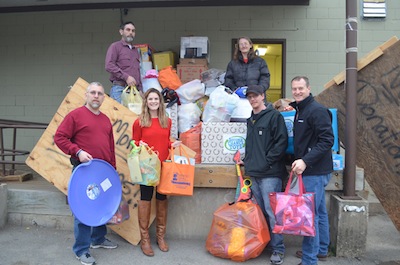
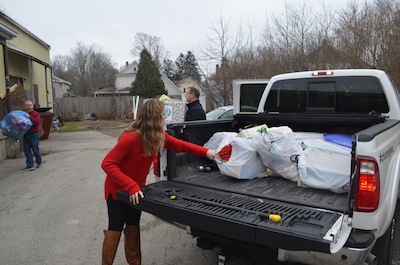
We love when different groups work together, especially when it's centered around a collection of toys for children in need! The Enivornmental Club of Pascack Valley High School got together with Daisy Girl Scout Group #96970 of New Milford, NJ for a successful toy drive this holiday season. Thanks to everyone involved!
We were excited to partner with Chobani for the first time last year. At their facility in Twin Falls, Idaho, they collected hundreds of wonderful used toys for children at One Church One Child, a state-run organization that helps place foster children in their forever homes. Chobani has industrial-sized scales, so they decided to weigh their donation. It tipped the scales at 541 pounds of donated plastic toys (see photo). Amazing!
Thank you, Chobani!
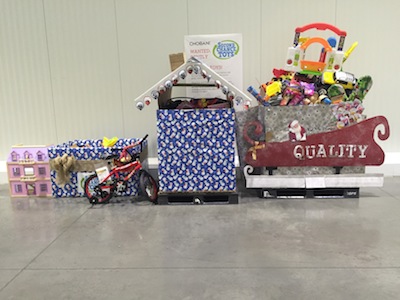
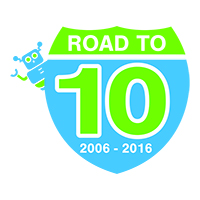
I never fully understood the idea that a toy can change a child’s life – until I met Anthony.
Anthony was one of the first children to receive a toy from Second Chance Toys – back in the early days. He and his brother were living in a homeless shelter in Newark, NJ at the time. Anthony picked the plastic dinosaur from the pile of gently loved toys we dropped off that holiday season. Like hundreds of thousands of other kids, Anthony was the recipient of one of our toy drives where we collect, clean and redistribute plastic toys to children in need. We do our part to help save the earth from non-biodegradable plastic – and we recycle love for kids.
Anthony’s mom recently told me that Anthony’s plastic dinosaur is still at the top of his toy pile today. You see, Anthony is really interested in science and the way the world works. And that toy dinosaur is inspiring him to pursue an education in the animal sciences – and become a scientist – to buy his mother a beautiful home so that she will never be homeless again.
This year, Second Chance Toys will mark its 10th Anniversary. I can’t believe it has been ten years since Sasha collected her first pile of toys off the curb one autumn day. It changed our lives forever. And it has changed the lives of more than a million disadvantaged children.
We now have requests from more than 650 recipient organizations for over 250,000 toys. We’ve come a long way from that first pile of toys but we still have so much more to accomplish. And we hope more businesses and families join us in this mission that could really change the world – and make a real difference in the lives of children.
Our Road to 10 kicks off this month. It’s a 10-month countdown where we’re asking for your help to keep efforts at Second Chance Toys going full throttle these upcoming 10 months.
So please donate $10, 10 x $10 or whatever you can afford. Tell 10 friends or colleagues about second Chance Toys. Think of 10 new ways you can help a child in need. And join us on our Road to 10 as we unveil a series of events, activities and funding opportunities.
Wishing you and yours – and all the children we serve through SCT – a fabulous 2016!
Shelly Lipton, SCT Board Chairman
Tashua Elementary School in Trumbull, CT held its 5th annual Second Chance Toy Drive this year and it was--once again, hugely successful! Families from the school and surrounding area (especially the 5th graders, who tied the toy drive into a service project) collected close to 1,000 toys. Below are some photos of their efforts, which also grabbed the attention of their local newspaper. Well done, Tashua!
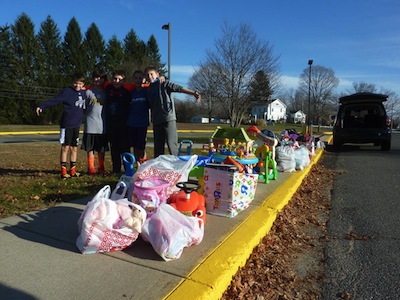
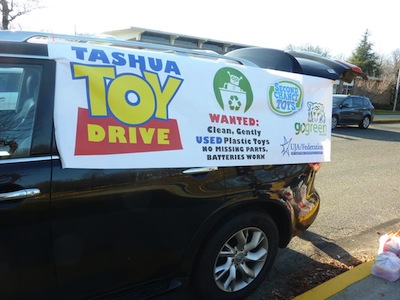
A big thanks and congratulations to our partners at Kidville (and 1-800-GOT-JUNK?--who delivered the toys) for collecting more than a thousand toys at its multiplie collection locations across the NY Metro area. Way to go!
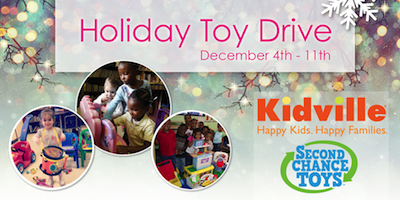
Another successful Toy Drive from Kidville!
